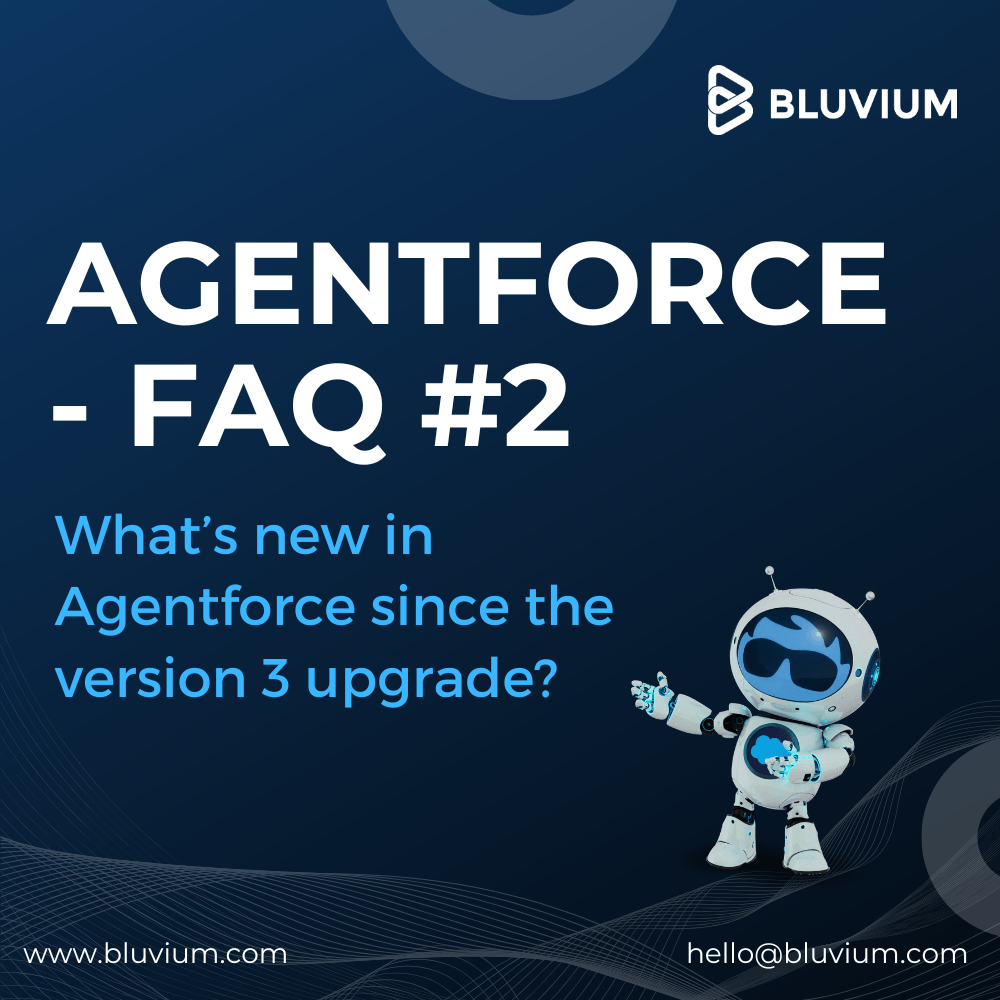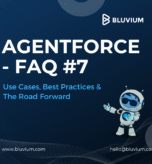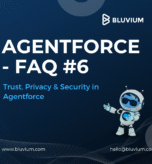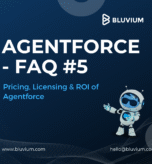
Agentforce FAQ Series: Latest Agentforce Features from Summer ’25 & Winter ’26 Releases?
As part of our ongoing Agentforce FAQ series, we’re diving into one of the most common questions we’ve been hearing from prospects, customers, and Salesforce developers: “What’s new in Agentforce since the version 3 upgrade?”While Agentforce 3 introduced foundational improvements like Command Center and MCP integrations (covered in our first FAQ on Agentforce 3 features), Salesforce hasn’t slowed down. The Summer ’25 and Winter ’26 releases delivered a range of enhancements that further refine performance, usability, and enterprise readiness.
These release-specific features are not about reinventing Agentforce—they’re about building on the platform’s strengths and responding to real-world feedback from Salesforce’s ecosystem. Here are the key updates you need to know:
- Context-aware multi-agent orchestration – Enables multiple AI agents to collaborate intelligently across complex workflows, improving automation depth.
- Native Slack integration for Command Center – Brings Agentforce metrics and alerts directly into your team’s daily communication environment for faster action.
- Adaptive prompt tuning – Refines natural language understanding for greater accuracy without additional heavy customization.
- Customizable agent personas – Allows admins to tailor tone, style, and behavior for specific departments or customer segments.
- Zero-downtime upgrade tools – Ensures smoother rollouts and minimizes operational risk when adopting future updates.
- Enhanced governance analytics – Offers deeper insights into agent adherence, compliance trends, and optimization opportunities.
- Extended industry template packs – Expands prebuilt workflows for manufacturing, telecom, and public sector use cases.
- Low-code extensions and API performance boosts – Makes it easier for developers to integrate and extend Agentforce at scale.
- Improved encryption management and expanded data masking – Strengthens security and regulatory compliance for sensitive operations.
These enhancements show Salesforce’s commitment to continuous innovation—keeping Agentforce ahead of customer expectations and competitive pressures. They also highlight Salesforce’s responsiveness to feedback from enterprises and partners actively deploying AI agents at scale.
For organizations already on Agentforce 3, adopting these release updates can unlock additional efficiency, speed, and governance benefits. For those still on earlier versions or evaluating a first deployment, these features represent an even more compelling reason to make Agentforce part of your AI strategy.
This post is part of Bluvium’s Agentforce FAQ Blog Series, designed to guide Salesforce customers, partners, and developers through every key development in the Agentforce ecosystem. Stay tuned for our next FAQ, where we’ll unpack common adoption challenges and best practices for Agentforce deployments.
Email us at hello@bluvium.com to learn how these new Agentforce features can be tailored to your Salesforce environment or to request a custom demo.





